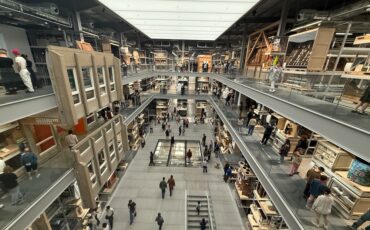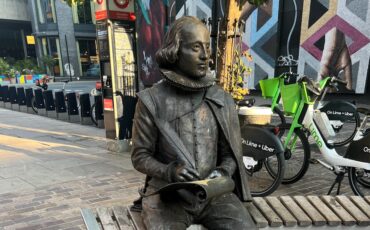Last month, Joanna Tapp, the Royal Academy of Music Museum curator, gave a group of Guide London Blue Badge Tourist Guides a fascinating tour taking in three floors, historic instruments galore and demos of how they work. The UK’s very first conservatoire opened in 1822 in a large house in Tenterden Street with recital space for 10-15 residential pupils and George IV issued a royal charter endorsing it 1830. Since 1912 it has stood on Marylebone Road not far from Madame Tussauds London and is not to be confused with the Royal College of Music, a later foundation set up with monies from the Great Exhibition!
Under the Royal Academy’s first Principal, Dr William Crotch (an apt name), pupils had to have not just promise and enthusiasm but also a patron as there were no bursaries. All the students practised together in one room, which was supposed to train their ear. They wore distinctive uniforms with a blue jacket. Girls wore long sleeves and curls were banned as too sexy, with red sashes still compulsory in the 1970s. Fanny Dickens studied singing & piano here while her brother Charles was working in the blacking factory. Other famous students have included Arthur Sullivan – the manuscript for The Mikado is one of the museum’s gems; Henry Wood of Prom fame – we saw his flamboyantly long batons; Annie Lennox and Myleene Klass. The famous bust of Henry Wood which is garlanded on the Last Night of the Proms is otherwise kept here. Elton John was a Saturday student at the Junior Academy. Dennis Brain’s famous French horn is on show, having been restored at his family’s expense after he died young in a car crash in 1957. Liszt gave virtuoso recitals and master classes.
The Royal Academy of Music Museum occupies part of the ground floor and upper storeys, with each level displaying a different class of historical instrument. There are 250 historic instruments in all and each floor also has a glass- fronted workshop so you can see specialist tuning and repair work being done. Borrowing is allowed and a student called Peter Cropper took out a Strad and trashed it! In the strings gallery are – among other marvels like dulcimers, 16th century lutes and an English guitar thought suitable for women – a cello, viola and two violins made by Stradivarius, the RAM’s viola being one of only 10 left in the world. A spooky Daniel Maclise portrait of Paganini shows why the violinist was believed to have sold his soul to the devil, a rumour he capitalised on. Nowadays his flexible joints are often ascribed to a disease called Marfan’s syndrome. The keyboard gallery shows how over centuries the virginals gradually developed into the huge 19th-century concert piano, some specimens with special effects like the ‘Venetian swell’ or ‘repetition action’. The largest, an iron-framed Steinway, is too loud to be played in the RAM’s confined space. There is a large early 20th-century map of London piano workshops showing that the World’s End pub in Camden was once a Piano Exchange.
Highly recommended is the current temporary exhibition, running until 30 November, on Yehudi Menuhin (1916-1999) who would have been 100 this year. This comprises archive film footage (20 minutes’ worth) and memorabilia such as an early childhood practice schedule and the violin case he took to his last concert in Berlin, filled with love letters, socks, combs and a scarf given him by Ravi Shankar. Royal Academy of Music students were always agog to see what cool new activity he would recommend on his visits: Iyengar yoga, organic food, Indian classical music… Menuhin went to India before the Beatles and took music into places of conflict: South Africa under apartheid, Russia and in 1945, together with Benjamin Britten, Belsen concentration camp.
If notice is given by a Guide London Blue Badge Tourist Guide with a group, students from the academy can be on hand to demonstrate the instruments because all are in playing condition. The Royal Academy of Music’s collection is on-line to explore and there is a programme of mainly free concerts and small lecture recitals. A visit to the Royal Academy of Music Museum combines well with a stroll in Regent’s Park or shopping on Marylebone Lane.






